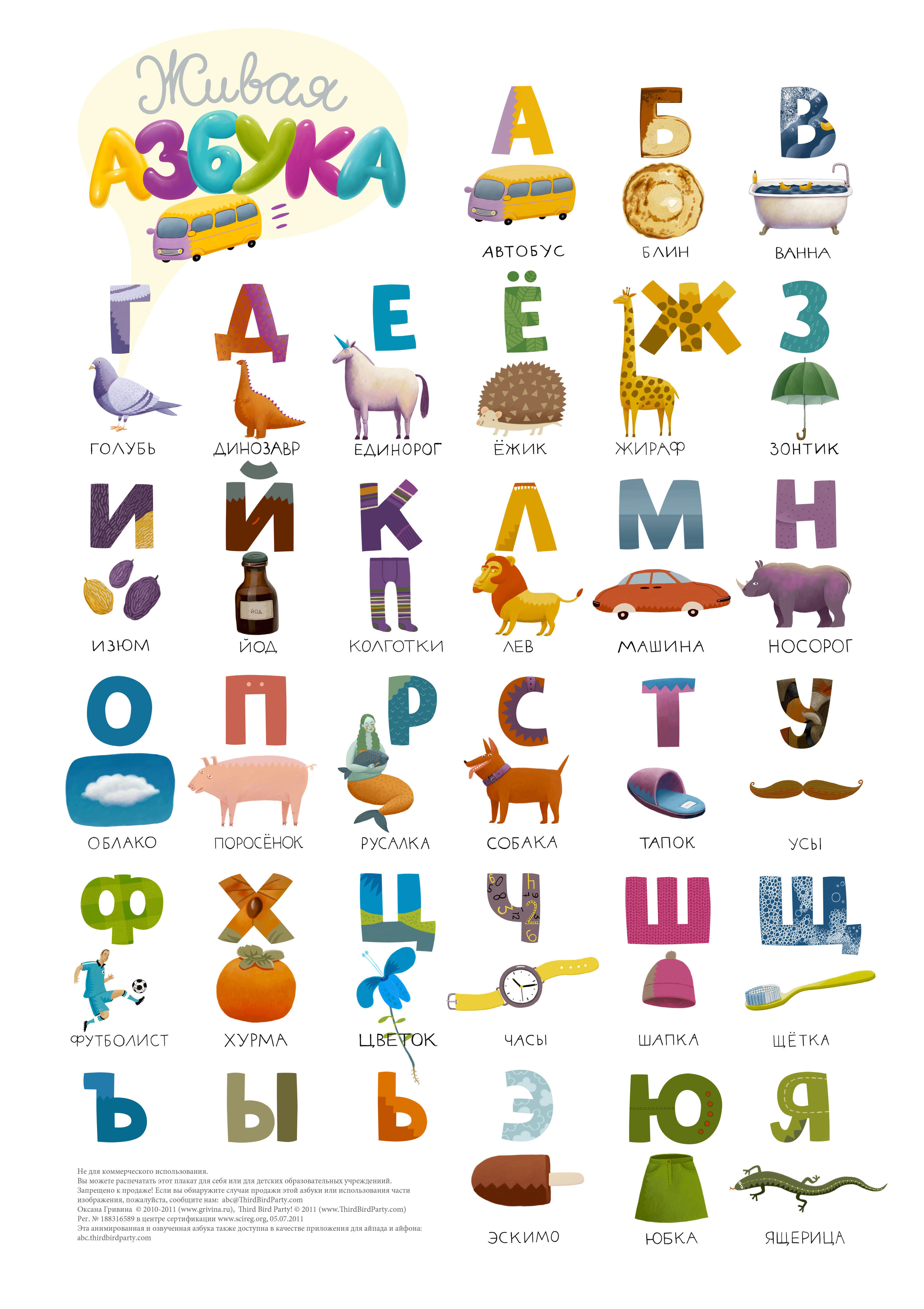Немно́го о языке́ 1.1 Ама́нда Ли
-
1. Ру́сский алфави́т
Russian is written in the Cyrillic alphabet, which is named in honor of Saint Cyril (Kirill), who together with his brother Methodius, brought Christianity and literacy to the Slavs in Central Europe in the middle of the 9th century.
The modern Russian alphabet consists of 33 letters, 21 consonants, 10 vowels and two signs. The letters have both names (like ABC, in English) and sounds that they represent. There is no traditional “alphabet” song in Russian, although you can find different versions on the web. Here is one example from the Russian version of Sesame Street:
In the course of this unit you will learn to recognize all of the letters, connect them to the basic sounds that they represent, and read and recognize Russian words. We will talk about writing in Russian script a little later in this unit.
Что де́лать: Review the letters that you have seen so far, clicking on the sound file and repeating the sound as you read through the tables.
Russian letters that look and sound like English letters
бу́ква звук коммента́рий К к [k] as in kite, like М м [m] as in mama, Moscow Т т [t] as in Tom, stop Russian letters that look like English letters, but sound different
бу́ква звук коммента́рий В в [v] as in vase, invite Р р [r] as in rate, rose (slightly trilled in Russian) Н н [n] as in night, note С с [s]; never [k] as in cell, soda, sand Russian letters that look and sound like Greek or Hebrew letters
Гла́сные
Notice how the vowel letters come in pairs, with я, е, ю consisting of an initial glide “y” followed by а, э, у respectively. Learning to pair Russian’s 10 vowels in this way will help you to make sense of some major features of Russian grammar and spelling. In the table above are the eight vowels you have already seen. The remaining two will be introduced soon.
-
2. Пишем по-русски
So far you have encountered the Russian letters in their print forms, but when Russians write notes, cards, and letters by hand, they virtually always write in cursive, and learning cursive writing is part of the cultural tradition of education in Russia. The cursive forms of the letters are used not only in handwritten communication, but also in fancier typefaces.
Russians tend to regard block printing as a sign of a poorly literate writer. For that reason, even if you do not write in cursive in English, you need to learn how to read and write in cursive in Russian.
You may be tempted, especially early on in your study of the language, to write words using English letters, because it seems faster and more comfortable. Try your best not to, however, since it will slow down your progress in learning to read and write Russian. Write using the Cyrillic alphabet, even if it seems hard and slow at first. The faster you can “map” the sound you hear to the correct graphic representation(s) of that sound, the quicker you will feel comfortable reading and writing.
While most of the letters in their cursive forms look similar to print forms, there are some differences.

Watch the animations below on Russian writing to see how to form the cursive letters.
Cursive animations by David Kanig.
-
3. Печа́таем по-ру́сски
Various sites (e.g., the Open Language Resource Center) can explain to you how to turn on Russian Cyrillic keyboards that are included on on most computers and mobile devices. As you turn on these keyboards, you may have the choice between selecting a keyboard layout that is “homophonic” (i.e., where the Russian letter а is mapped to the place where the English letter a is, and the Russian letter ф is mapped to the key where the English letter f is) or the standard Russian keyboard layout, which places letters according to frequency and typing combinations that reflect Russian. Although the standard Russian keyboard requires more time for you to learn now, “homophonic” keyboards are not always available on computers in Russia.

Regardless of which keyboard layout you choose, you should definitely avoid using online tools that convert English letters to Cyrillic ones. You can get stickers for your keyboard to help you remember the places of the Russian letters.

 Courtesy of
Courtesy of